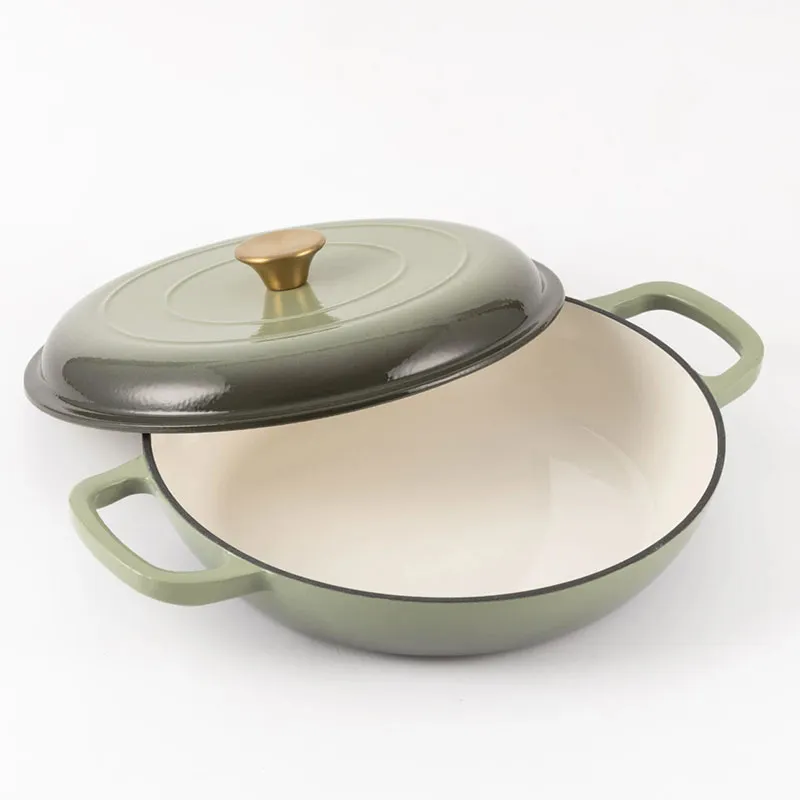
can you re enamel a cast iron pot
Re-Enameling a Cast Iron Pot A Comprehensive Guide
Cast iron pots are cherished kitchen staples known for their durability and excellent heat retention. Over time, however, even the most well-loved pots can show signs of wear and tear, especially the enamel coating. If you find your once-beautiful enameled cast iron pot looking dull or chipped, you may wonder can you re-enamel a cast iron pot? The answer is multifaceted, involving insights about the enamel process, restoration techniques, and viable alternatives.
Understanding Enamel and Its Benefits
Enamel is a glass-like coating that is fused to the metal surface during a high-temperature process. This coating not only lends color and beauty to cookware but also creates a non-reactive surface that prevents food from sticking and makes cleaning easier. Enameled cast iron pots are particularly popular for their ability to cook evenly and retain heat, making them ideal for slow-cooking and braising.
However, the enamel can chip or wear over time, exposing the bare cast iron beneath. This can lead to rust and other complications if not addressed. While re-enameling seems like a straightforward solution, it is not as simple as it sounds.
Can You Re-Enamel?
In theory, it is possible to re-enamel a cast iron pot, but it is not a common practice for several reasons. The enamel process requires specialized kilns and materials that can withstand high temperatures. Most consumers lack access to the facilities needed for proper re-enameling. Additionally, the process must be done under controlled conditions to prevent defects like bubbling or discoloration.
There are, however, some DIY methods that can repair small chips in the enamel. Dedicated enamel repair kits are available, containing products designed to fill in chips and restore a smooth surface. These kits usually involve a two-part epoxy resin or similar material that can withstand heat.
How to Repair Small Chips
1. Clean the Area Start by cleaning the chipped area thoroughly. Remove any loose enamel and debris. Use a fine grit sandpaper if necessary, but avoid sanding down to the bare cast iron. 2. Apply the Repair Compound Follow the instructions provided with your repair kit. Usually, you will mix the two parts of the resin and apply it directly into the chip with a small tool or brush.
3. Allow to Cure After applying the compound, let it cure for the recommended time. This usually takes several hours to a day, depending on the product.
can you re enamel a cast iron pot

5. Re-season if Necessary Depending on the extent of the repair, you might wish to season the pot to add a protective layer.
Alternatives to Re-Enameling
While repair kits can help restore functionality to chipped cookware, complete re-enameling is typically unrealistic for home cooks. Instead, consider these alternatives
- Professional Re-enameling Services Some companies specialize in professional enamel restoration. Although potentially costly, this ensures that the pot is re-enamel-coated correctly with high-quality materials. - Replacement If the pot is significantly damaged or you are looking for a different color or style, it might be more practical to invest in a new enameled cast iron pot. There are many options available today that offer excellent performance and aesthetics.
Maintenance Tips for Longevity
To reduce the need for repairs in the future, here are some maintenance tips
- Avoid Abrasive Cleaners Use soft sponges and mild detergents to clean your enameled pot. Avoid steel wool and other abrasive materials that can scratch the surface.
- Don’t Overheat Extreme temperatures can lead to cracking. Always preheat your pot gradually and avoid high heat settings.
- Store Carefully When stacking cookware, use protective layers between pots to prevent scratching the enamel.
In conclusion, while re-enameling a cast iron pot is not feasible for most home cooks, small chips can be repaired using dedicated kits. For larger restorations, seek professional help or consider investing in a new piece. With the right care and maintenance, your enameled cast iron pot can continue to be a beloved part of your kitchen for many years to come.
-
Season Cast Iron Perfectly with GPT-4 Turbo TipsNewsAug.01,2025
-
High Quality Cast Iron Cookware - Baixiang County Zhongda MachineryNewsAug.01,2025
-
Premium Cast Iron Pan: Durable & Perfect HeatNewsAug.01,2025
-
High Quality Kitchen Durable Black Round Cast Iron Cookware Pancake Crepe Pan-Baixiang County Zhongda Machinery Manufacturing Co., Ltd.NewsAug.01,2025
-
Cast Iron Cookware - Baixiang County Zhongda Machinery | Nonstick, Heat ResistanceNewsAug.01,2025
-
High Quality Kitchen Durable Black Round Cast Iron Cookware - Baixiang County Zhongda Machinery | Non-Stick, Heat Retention, DurableNewsJul.31,2025


